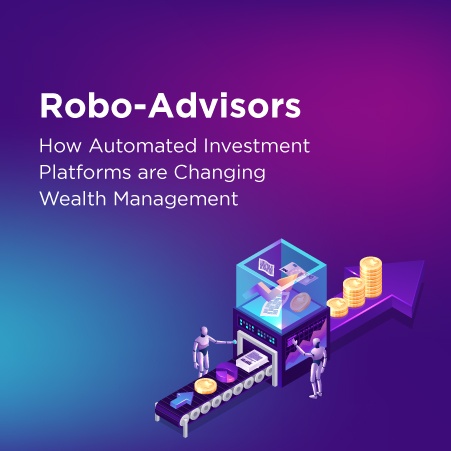The best robo-advisors for automated wealth growth
 The Best Robo-Advisors for Automated Wealth Growth
The Best Robo-Advisors for Automated Wealth Growth
Digital investment platforms offering automated portfolio management services have emerged as a powerful tool for individuals seeking to build wealth efficiently. These platforms leverage algorithms and technology to create diversified portfolios tailored to individual risk tolerance and financial goals, requiring minimal ongoing human intervention. This approach offers accessibility to sophisticated investment strategies for a wider range of investors, potentially democratizing wealth creation. Historically, such sophisticated portfolio management was largely inaccessible to individuals without substantial capital, highlighting the transformative nature of these platforms.
This article will explore key aspects of selecting and utilizing such platforms, examining factors influencing their effectiveness and outlining best practices for maximizing their benefits. The discussion will cover frequently asked questions, practical tips for users, and a concluding overview of the key considerations for successful automated wealth growth.

FAQs about Automated Investment Platforms
This section addresses common queries regarding the selection and utilization of automated investment platforms for wealth building.
Question 1: What are the key factors to consider when choosing an automated investment platform?
Key considerations include the platform's investment philosophy (e.g., passive vs. active), fee structure (including management fees and expense ratios), minimum investment requirements, level of customization available (ability to adjust risk tolerance and investment goals), security measures protecting user data and assets, and the platform's regulatory compliance and reputation.
Question 2: How do these platforms manage risk?
Risk management typically involves constructing diversified portfolios across different asset classes (stocks, bonds, etc.) according to the investor's stated risk profile. Sophisticated algorithms monitor market conditions and rebalance portfolios periodically to maintain the desired asset allocation and mitigate risk. However, it's crucial to understand that no investment strategy eliminates risk entirely.
Question 3: Are these platforms suitable for all investors?
While accessible to a wider range of investors, these platforms may not be ideal for everyone. Individuals with complex financial situations, specific tax considerations, or a strong preference for hands-on investment management might find traditional financial advisors more suitable.
Question 4: What are the potential downsides of using automated investment platforms?
Potential downsides include limitations in personalization beyond predefined risk profiles, the inability to react to rapidly changing market conditions in real-time (though algorithms aim to mitigate this), and the possibility of hidden fees or unfavorable terms within the platform's service agreement.
Question 5: How can investors monitor their investments on these platforms?
Most platforms provide online dashboards showing portfolio performance, asset allocation, transaction history, and other relevant data. Regular monitoring allows investors to track their progress and make informed decisions, though significant adjustments are usually handled automatically by the platform’s algorithms.
Question 6: What happens if the market experiences a significant downturn?
During market downturns, portfolio values will likely decline, reflecting the inherent risk of investing. While automated platforms cannot prevent losses, their diversified strategies and risk management algorithms aim to minimize losses over the long term, and rebalancing may occur to take advantage of market dips.
The information provided should not be considered exhaustive. Thorough research and consultation with a qualified financial advisor are recommended before making investment decisions.
Tips for Utilizing Automated Investment Platforms Effectively
Optimizing the use of automated investment platforms requires a strategic approach encompassing careful planning and ongoing monitoring.
Tip 1: Define Clear Financial Goals: Establishing specific, measurable, achievable, relevant, and time-bound (SMART) financial goals (e.g., retirement savings, down payment on a house) is crucial. This guides the selection of a suitable investment strategy and risk tolerance.
Tip 2: Determine Your Risk Tolerance: Accurately assessing your risk tolerance—your comfort level with potential investment losses—is paramount. This will influence the allocation of assets within your portfolio.
Tip 3: Compare Platforms Thoroughly: Before committing, compare various platforms based on fees, investment options, customer support, security measures, and user-friendliness.
Tip 4: Review and Adjust Regularly: While the platforms automate much of the investment process, periodic reviews (e.g., annually or semi-annually) are important to ensure your goals and risk tolerance remain aligned with your investment strategy. Life changes might necessitate portfolio adjustments.
Tip 5: Understand Fee Structures: Carefully examine all fees associated with the platform, including management fees, expense ratios, and any transaction fees. Excessive fees can significantly erode returns.
Tip 6: Prioritize Security: Verify that the platform employs robust security measures to protect user data and assets from unauthorized access and cyber threats.
By adhering to these tips, investors can significantly enhance the effectiveness of these platforms in achieving their long-term financial objectives.
Conclusion on Automated Investment Platforms
Automated investment platforms represent a significant advancement in accessibility to sophisticated wealth management strategies. By leveraging technology and algorithms, these platforms democratize wealth creation, offering individuals a streamlined and efficient path towards achieving their financial goals. However, understanding the platform's mechanics, carefully evaluating risk tolerance, and ongoing monitoring remain crucial elements for success. Choosing the right platform, with due diligence and a clear understanding of its features and limitations, empowers individuals to take control of their financial futures.
The future of automated investment likely involves further refinement of algorithms, increased personalization options, and deeper integration with other financial tools. Prospective users are encouraged to conduct thorough research and prioritize a platform aligned with their individual needs and long-term objectives.

Published on: 2025-05-03T22:20:46.000Z
